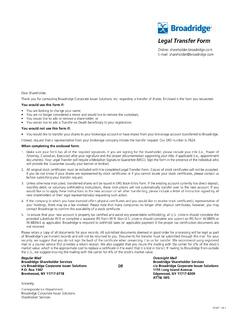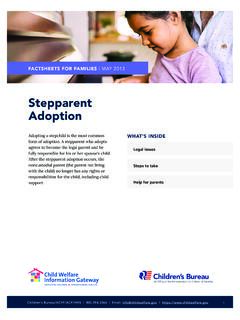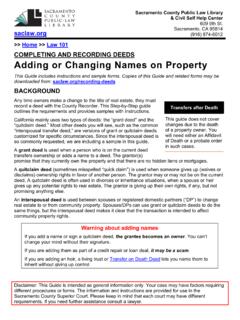Transcription of AS and A Level Computer Science, Pseudocode Guide
1 Computer SCIENCEP seudocode GuideAu g u s t 2015AS and A LEVELH046/H446 We will inform centres about any changes to the specification. We will also publish changes on our website. The latest version of our specification will always be the one on our website ( ) and this may differ from printed versions. Copyright 2016 OCR. All rights OCR retains the copyright on all its publications, including the specifications. However, registered centres for OCR are permitted to copy material from this specification booklet for their own internal Cambridge and RSA Examinations is a Company Limited by Guarantee. Registered in England. Registered company number office: 1 Hills Road Cambridge CB1 2EU OCR is an exempt charity. Pseudocode GUIDE3AS AND A Level Computer SCIENCECONTENTS INTRODUCTION PAGE 4 VARIABLES PAGE 4 CASTING PAGE 4 OUTPUTTING TO SCREEN PAGE 5 ITERATION COUNT CONTROLLED PAGE 5 ITERATION CONDITION CONTROLLED PAGE 5 LOGICAL OPERATORS PAGE 6 STRING HANDLING PAGE 7 SUBROUTINES PAGE 8 ARRAYS PAGE 9 READING TO AND WRITING FROM FILES PAGE 10 COMMENTS PAGE 11 OBJECT-ORIENTED PAGE 11 METHODS AND ATTRIBUTES: PAGE 11 CONSTRUCTORS AND inheritance PAGE 12 Pseudocode GUIDE4AS AND A Level Computer SCIENCEV ariablesVariables are assigned using the = Bob A variable is declared the first time a value is assigned.
2 It assumes the data type of the value it is declared inside a function or procedure are local to that in the main program can be made global with the keyword userid = 123 CastingVariables can be typecast using the int str and float functionsstr(3) returns 3 int( 3 ) returns 3float( ) returns following Guide shows the format Pseudocode will appear in the examined components. It is provided to enable teachers to provide learners with familiarity before the exam. Learners are not expected to memorise the syntax of this Pseudocode and when asked may provide answers in any style of Pseudocode they choose providing its meaning could be reasonably inferred by a competent GUIDE5AS AND A Level Computer SCIENCEO utputting to Screenprint(string)Example:print( hello )Taking Input from User:variable=input(prompt to user)Example:name=input( Please enter your name )Iteration Count Controlledfor i=0 to 7 print( Hello )next iWill print hello 8 times (0-7 inclusive).
3 Iteration Condition Controlledwhile answer!= Computer answer=input( What is the password? )endwhiledo answer=input( What is the password? )until answer== Computer Pseudocode GUIDE6AS AND A Level Computer SCIENCEL ogical OperatorsAND OR NOTegwhile x<=5 AND flag==falseComparison Operators Arithmetic Operators==Equal to!=Not equal to<Less than<=Less than or equal to>Greater than>=Greater than or equal to SelectionSelection will be carried out with if/else and switch/caseif/elseif entry== a then print( You selected A )elseif entry== b then print( You selected B )else print( Unrecognised selection )endif+Addition x=6+5 gives 11-Subtraction x=6-5 gives 1*Multiplication x=12*2 gives 24/Division x=12/2 gives 6 MODM odulus 12 MOD5 gives 2 DIVQ uotient 17 DIV5 gives 3^Exponentiation 3^4 gives 81 Pseudocode GUIDE7AS AND A Level Computer SCIENCE switch/caseswitch entry: case A : print( You selected A ) case B :1 print( You selected B ) default.
4 Print( Unrecognised selection )endswitchString HandlingTo get the length of a get a (startingPosition, numberOfCharacters)NB The string will start with the 0th :someText= Computer Science print( )print( (3,3))Will display:16putPSEUDOCODE GUIDE8AS AND A Level Computer SCIENCES ubroutinesfunction triple(number) return number*3endfunctionCalled from main programy=triple(7)procedure greeting(name) print( hello +name)endprocedureCalled from main programgreeting( Hamish )Unless stated values passed to subroutines can be assumed to be passed by value. If this is relevant to the question byVal and byRef will be used. In the case below x is passed by value and y is passed by foobar(x:byVal, y:byRef) ..endprocedurePSEUDOCODE GUIDE9AS AND A Level Computer SCIENCEA rraysArrays will be 0 based and declared with the keyword names[5]names[0]= Ahmad names[1]= Ben names[2]= Catherine names[3]= Dana names[4]= Elijah print(names[3])Example of 2D array:Array board[8,8]board[0,0]= rook Pseudocode GUIDE10AS AND A Level Computer SCIENCER eading to and Writing from FilesTo open a file to read from openRead is used and readLine to return a line of text from the following program makes x the first line of = openRead( )x = () ()endOfFile() is used to determine the end of the file.
5 The following program will print out the contents of = openRead( )while NOT () print( ()) ()To open a file to write to openWrite is used and writeLine to add a line of text to the file. In the program below hello world is made the contents of (any previous contents are overwritten).myFile = openWrite( ) ( Hello World ) ()CommentsComments are denoted by //print( Hello World ) //This is a commentPSEUDOCODE GUIDE11AS AND A Level Computer SCIENCEO bject-OrientedObject oriented code will match the Pseudocode listed above with the following extensions:Methods and Attributes:Methods and attributes can be assumed to be public unless otherwise stated. Where the access Level is relevant to the question it will always be explicit in the code denoted by the keywords. public and attempts = 3public procedure setAttempts(number) attempts=numberendprocedureprivate function getAttempts() return attemptsendfunctionMethods will always be instance methods, learners aren t expected to be aware of static will be called using (5)print( ()) Pseudocode GUIDE12AS AND A Level Computer SCIENCEC onstructors and InheritanceConstructors will be procedures with the name Pet private name public procedure new(givenName) name=givenName endprocedureendclassInheritance is denoted by the inherits keyword, superclass methods will be called with the keyword super.
6 (parameters) in the case of the constructor this would be ()class Dog inherits Pet private breed public procedure new(givenName, givenBreed) (givenName) breed=givenBreed endprocedureendclassTo create an instance of an object the following format is usedobjectName = new className(parameters)egmyDog = new Dog( Fido , Scottish Terrier ) Pseudocode GUIDE13AS AND A Level Computer SCIENCE OCR Resources: the small printOCR s resources are provided to support the delivery of OCR qualifications, but in no way constitute an endorsed teaching method that is required by OCR. Whilst every effort is made to ensure the accuracy of the content, OCR cannot be held responsible for any errors or omissions within these resources. We update our resources on a regular basis, so please check the OCR website to ensure you have the most up to date resource may be freely copied and distributed, as long as the OCR logo and this small print remain intact and OCR is acknowledged as the originator of this work.
7 OCR acknowledges the use of the following content:Square down and Square up: get in touch if you want to discuss the accessibility of resources we offer to support delivery of our qualifications: d like to know your view on the resources we produce. By clicking on the Like or Dislike button you can help us to ensure that our resources work for you. When the email template pops up please add additional comments if you wish and then just click Send . Thank you already offer OCR qualifications, are new to OCR, or are considering switching from your current provider/awarding organisation, you can request more information by completing the Expression of Interest form which can be found here: staff training purposes and as part of our quality assurance programme your call may be recorded or monitored. OCR 2016 Oxford Cambridge and RSA Examinations is a Company Limited by Guarantee. Registered in England. Registered office 1 Hills Road, Cambridge CB1 2EU.
8 Registered company number 3484466. OCR is an exempt customer contact centreGeneral qualificationsTelephone 01223 553998 Facsimile 01223 552627 Email


















